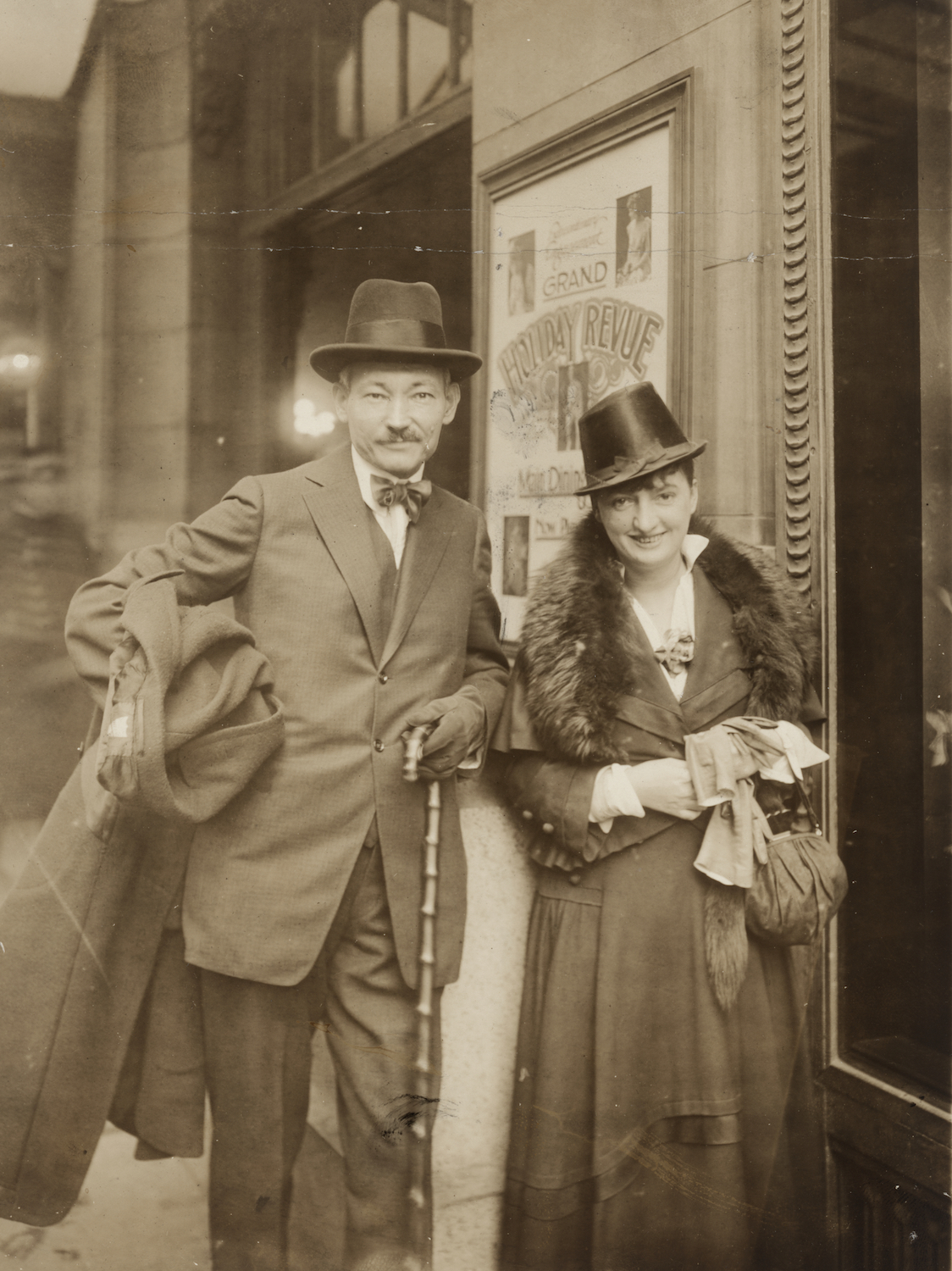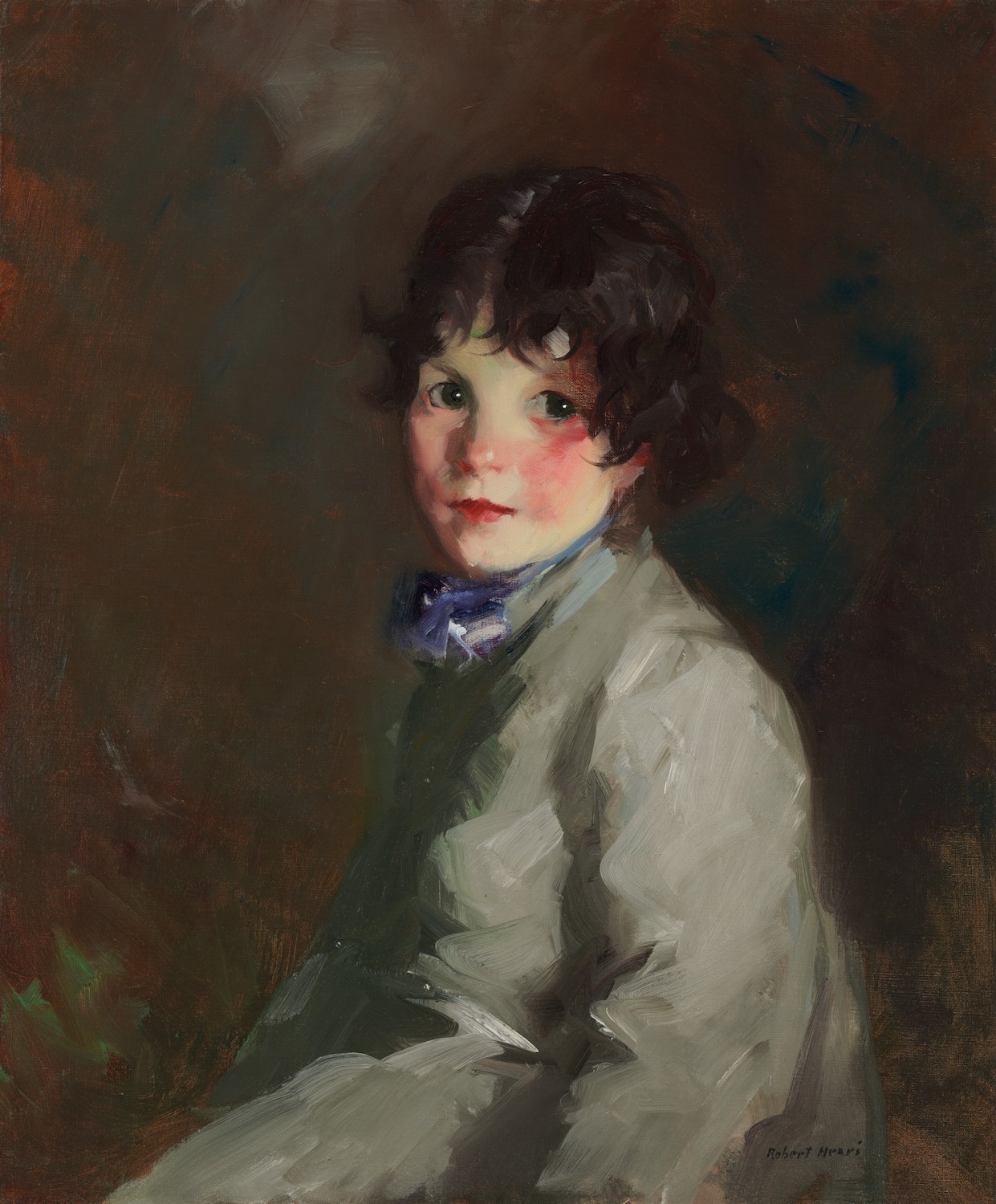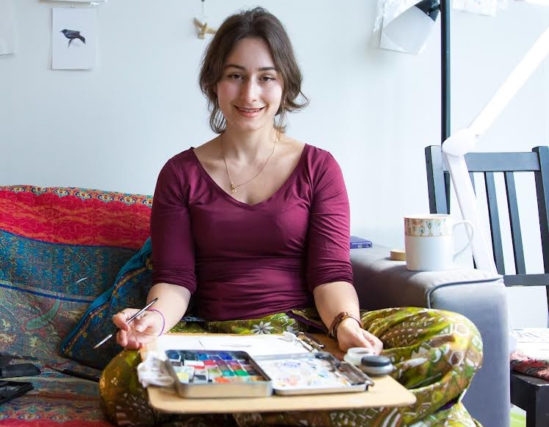
It’s been brought to my attention that this year marks the hundredth anniversary of the publication of The Art Spirit, a selection of letters, lectures and studio critiques by Robert Henri, compiled by Margery Ryerson, a former student. I first read the book as a teenager, though I use the term advisedly; one doesn’t read The Art Spirit cover-to-cover, but dips into it periodically, randomly. For twenty-odd years I’d shelved it, leaving a dim memory of aphorisms I presumed had grown stale. When I picked the book up again, it was as a teacher for whom Henri’s words struck with unexpected relevance (Today I opened a paperback copy in the middle and read, “Let a student enter the school with this advice: No matter how good the school is, his education is in his own hands.”) I started reading passages to college students. At any rate, talk about spiritual themes probably meets with a better reception if the speaker has a bit of the devil in them, as was the case with Henri, whose magnetism was such that he exiled William Merritt Chase from his own art school. We’ll circle back.
Robert Henry Cozad was born in Cincinnati (see previous piece on John Twachtman, also from Cincinnati) in 1865. His father was a riverboat gambler who founded a town in Ohio and another in Nebraska, each bearing his name. Somewhat less auspiciously, In 1882 he killed a rancher in self defense in a dispute over cattle, and the family moved to Denver and changed their names; Henri dropped his surname and gave Henry a French spelling. They moved east, and Henri enrolled at the Pennsylvania Academy of the Fine Arts in 1886. In 1888, he went to Paris and studied academic art with William-Adolphe Bouguereau at the Académie Julian, but he was more sympathetic to Hals, Velázquez, and Manet. He returned to Philadelphia in 1891 and continued studying at the Pennsylvania Academy, and the following year began teaching at the Philadelphia School of Design for Women.

Henri became the philosophical leader of a group of Philadelphia illustrators, forming the core of what would be the Ashcan School. Their impetus was to paint contemporary life with immediacy, and though Henri returned to Paris in the 1890s, he was done with both academic art and Impressionism. He envisioned an expression that was earthier and more connected to human experience, especially that of city life. The idea reached fruition at the turn of the century in New York City, where Henri began teaching at the Veltin School for Girls and, more consequentially, the New York School of Art (now Parsons School of Design). The New York School of Art was founded by William Merritt Chase as a progressive response to the Art Students League of New York, itself created several decades earlier as a more liberal alternative to the National Academy of Design. Henri’s hiring by the New York School provided a platform from which he challenged Chase—then the country’s preeminent art instructor—and the larger art establishment.
Chase invited Henri to teach at the New York School in 1902. Although they admired one another’s work and shared the same influences, their approaches and personalities differed dramatically. Chase was a genteel technician and a dandy; Henri was a painter of the urban scene, remembered by a student as the “bad boy of American art.” Both cultivated their images, and each sought to position himself at the vanguard of modern art. The bonhomie between them rapidly eroded. For more than five years, their conflict polarized students, made newspaper headlines and planted seeds that would influence a generation of American artists. In 1907, Chase left, or was driven from, the school he’d founded, to take on more hours at the Art Students League of New York. The ill will hardly dissipated; extramural student baseball games ended in fistfights and Henri’s students trashed League studios. This wasn’t just partisan devotion to a teacher and their ideology; this was the Sharks and Jets. The brawls were fierce enough to require police intervention. During a heated confrontation, Charles Vezin, a Chase student, struck Henri in the face. The animus between both sides was well-documented by art historian Kimberly Orcutt in a 2007 catalogue, but it’s still hard to believe that a disagreement over art pedagogy got so out of hand. Both artists believed they were battling to shape the future of art in this country. Neither the elegant Chase nor the vigorous Henri came out of the episode unscathed. As the leader of the Ashcan School, Henri may have been victorious in the short term, but barely a year after Chase’s departure, he was fired by the New York School’s management. Henri opened his own school, then joined the faculty of the Art Students League in 1915, where he taught until 1927.

What sort of teacher was Henri that he inspired such deep loyalty and animosity? Descriptions of his classroom style are numerous, but we can begin by recognizing his position as a provocateur who symbolized a subversive ideal: the embrace of subjects that scandalized traditionalists. Henri was simultaneously lauded in the press as a “revolutionary force” and vilified for promoting vulgar themes. Chase’s attacks on the new realists—“They go to the wretched part of the city and paint the worst people”—sound elitist, or worse. Without Henri’s example, John Sloan, George Bellows, Edward Hopper, Rockwell Kent, George Luks, and a legion of American artists would not have been the same.
Guy Pène du Bois recalled that “Henri set the class in an uproar. Completely overturned the apple cart: displaced art by life, discarded technic [sic], broke the prevailing gods as easily as brittle porcelain. The talk was uncompromising, the approach unsubtle, the result pandemonium.” For many, his enthusiasm was infectious. In the introduction to The Art Spirit, Forbes Watson called Henri “an inspired teacher with an extraordinary gift for verbal communication, with the personality and prophetic fire that transformed pupils into idolators.” Some students were less impressed with his rhetoric; when questioned as to what tangible lessons Henri imparted, Hal Burrows dismissed him as a “hypnotist.” Student recollections suggest an emotional, even mercurial personality. Individuality was valued above technical aptitude, and he was known to praise students with excessive use of the word “genius,” though he was also capable of stinging criticism. Henri preferred to work with students one-on-one, as opposed to delivering group critiques. His painted demonstrations, noted for their rapid execution, were an extension of his celebration of healthy physicality.

The edgier attributes of Henri’s painting, so clearly at odds with tradition in the eyes of his contemporaries, have softened with time. The Armory Show of 1913, in which European painting seemed to put traditional figuration in the rear view mirror, saw to that. But in the first decade of the twentieth century, the work of Henri, his colleagues and students, claimed a lineage to the realism of Thomas Eakins and Winslow Homer that was less urbane than heartily individualistic. Paintings like Street Scene with Snow (57th Street, NYC.) and Snow in New York look romantic when compared to Jacob Riis’s photojournalism of the era. Yet the snow that blankets city streets is not so much a seasonal adornment as a stark contrast to soot-covered surfaces; it has already turned to the least picturesque form of urban precipitation, slush. The New York street scenes are devoid of narrative, and their execution is broad enough to frustrate attempts to identify the sites.

When Henri’s cityscapes failed to sell, he turned his efforts toward portraiture. His best paintings in the genre are vigorously humanistic, with an interest in people of all backgrounds and a tremendous warmth for children; at worst, they are slapdash, the characterizations simplistic. One of his best portraits is Young Woman in White, which was, like many of his smaller canvases, said to have been painted in a single day. While we may well mistake it for a portrait commission in the grand manner, the subject was a professional model, who was described by a critic in another of Henri’s paintings as “that grand dame of the disreputable with her toothless, sunken jaw, her leery eyes….” (At roughly the same time, Walter Sickert’s unidealized women were receiving a similarly misogynistic reception in the London press). By declaring that a woman who was neither wealthy nor attractive merited the star treatment, Henri was challenging a longstanding convention. Putting an even finer point on his contrarian impulses were the portrayals of working class subjects like Celestina and Blind Spanish Singer, both of whom he met during his travels in Spain. Viewing these, one is reminded of Chase’s disdainful reference to “the worst people.” It thus becomes easier to understand why Henri would have appealed to young students who were ripe for rebellion.
The best way to understand his appeal will be found in the pages of The Art Spirit. Following are excerpts, some of which were written for his classes at the Art Students League of New York. I’ve paraphrased some of these in class over the years, often without realizing whence they originated. Far from the context of the philosophical battleground in which they were originally shared, Henri’s principles are thoughtful, passionate, and holistic in their view of the painting process. They are essential reading for artists.
• The brush stroke at the moment of contact carries inevitably the exact state of being of the artist at that exact moment into the work, and there it is, to be seen and read by those who can read such signs, and to be read later by the artist himself, with perhaps some surprise, as a revelation of himself.
• Don’t worry about the rejections. Everybody that’s good has gone through it. Don’t let it matter if your works are not “accepted” at once. The better or more personal you are the less likely they are of acceptance. Just remember that the object of painting pictures is not simply to get them in exhibitions. It is all very fine to have your pictures hung, but you are painting for yourself, not for the jury. I had many years of rejections.
• Do some great work, Son! Don’t try to paint good landscapes. Try to paint canvases that will show how interesting landscape looks to you – your pleasure in the thing. Wit.
• There are lots of people who can make sweet colors, nice tones, nice shapes of landscape, all done in nice broad and intelligent-looking brushwork….
• Every student should put down in some form or other his findings. All any man can hope to do is to add his fragment to the whole. No man can be final, but he can record his progress, and whatever he records is so much done in the thrashing out of the whole thing. What he leaves is so much for others to use as stones to step on or stones to avoid.
• I am not interested in technical stunts, in bravura. I am interested in simple expression. Not interested in painting the surface of things.
• There are terrible pictures that have taken time and pain to make, intricate and difficult, results of grinding patience, research, great amalgamations of material. They frighten the sensitive student for the message they carry is of the pain and boredom of their making.
• I do not want to see how skillful you are—I am not interested in your skill. What do you get out of nature? Why do you paint this subject? What is life to you? What reasons and what principles have you found? What are your deductions? What projections have you made? What excitement, what pleasure do you get out of it? Your skill is the thing of least interest to me.
Excerpts from Letter to the Class, Art Students League, 1915:
• An interest in the subject; something you want to say definitely about the subject; this is the first condition of a portrait. The processes of painting spring from this interest, this definite thing to be said. Completion does not depend on material representation. The work is done when that special thing has been said. The artist starts with an opinion, he organizes the materials, from which and with which he draws, to the expression of that opinion….
• All that I have said argues the predominant value of gesture. Gesture expresses through form and color the states of life.
• Work with great speed. Have your energies alert, up and active. Finish as quickly as you can. There is no virtue in delaying. Get the greatest possibility of expression in the larger masses first. Then the features in their greatest simplicity in concordance with and dependent on the mass. Do it all in one sitting if you can. In one minute if you can. There is no virtue in delaying. But do not pass from the work on mass to features until all that can be said with the larger forms has been said no matter how long it may take, no matter if accomplishment of the picture may be delayed from one to many days.
• A good painting is a remarkable feat of organization. Every part of it is wonderful in itself because it seems so alive in its share in the making of the unity of the whole, and the whole is so definitely one thing.




